Integrating Hibernate in Spring Boot projects
Preface
Hibernate is a popular ORM (Object Relational Mapping) framework that can map Java objects to database tables to facilitate Persistence operations. In the Spring Boot project, integrating Hibernate can help us perform database operations more easily. This article will introduce how to integrate Hibernate in the Spring Boot project and provide corresponding examples.
1.Introduce dependencies
Introduce the following dependencies in the pom.xml file:
<dependency> <groupId>org.springframework.boot</groupId> <artifactId>spring-boot-starter-data-jpa</artifactId> </dependency> <dependency> <groupId>mysql</groupId> <artifactId>mysql-connector-java</artifactId> </dependency> <dependency> <groupId>org.hibernate</groupId> <artifactId>hibernate-core</artifactId> </dependency>
Among them, spring-boot-starter-data-jpa is provided by Spring Boot As a starting dependency for integrating JPA (Java Persistence API), it already includes Hibernate-related dependencies. The driver for the MySQL database is mysql-connector-java. hibernate-core is the core dependency of Hibernate.
2. Configure the data source
Configure the data source in application.properties:
spring.datasource.url=jdbc:mysql://localhost:3306/test?useSSL=false&serverTimezone=UTC spring.datasource.username=root spring.datasource.password=123456 spring.datasource.driver-class-name=com.mysql.cj.jdbc.Driver spring.jpa.database-platform=org.hibernate.dialect.MySQL8Dialect spring.jpa.hibernate.ddl-auto=create-drop
The MySQL database is used here and can be modified according to the actual situation. Among them, the spring.jpa.hibernate.ddl-auto attribute specifies how Hibernate automatically generates database tables, and create-drop means that the table will be created every time the application is started, and the table will be deleted when the application is closed.
3. Create an entity class
Create a simple entity class for mapping to a database table:
@Entity
@Table(name = "person")
public class Person {
@Id
@GeneratedValue(strategy = GenerationType.IDENTITY)
private Long id;
@Column(name = "name")
private String name;
@Column(name = "age")
private int age;
// getters and setters
}Use the @Entity annotation on the entity class to indicate that this is A JPA entity class. The @Table annotation is used to specify the database table name to which the entity class is mapped. Use the @Id annotation to define the primary key of the entity class, and use @GeneratedValue to specify how the primary key is generated. The @Column annotation is used to specify the database column name to which entity class attributes are mapped.
4. Create Repository
Create a simple Repository for accessing the database:
@Repository
public interface PersonRepository extends JpaRepository<Person, Long> {
}Use the @Repository annotation on the Repository to indicate that it is a Spring component, and Used to access the database. PersonRepository inherits from JpaRepository. This interface provides many common database operation methods, such as save, findById, etc.
5. Write business code
Use PersonRepository in Service for database operations:
@Service
public class PersonService {
public void savePerson(Person person) {
personRepository.save(person);
}
public List<Person> getPersons() {
return personRepository.findAll();
}@Service annotation is used on a Service to indicate that it is a Spring component used for handling business logic. In this example, we define two methods, savePerson is used to save Person objects to the database, and getPersons is used to obtain all Person objects.
6. Write a controller to process http requests
Write a simple controller to process HTTP requests:
@RestController
public class PersonController {
@Autowired
private PersonService personService;
@PostMapping("/person")
public void savePerson(@RequestBody Person person) {
personService.savePerson(person);
}
@GetMapping("/persons")
public List<Person> getPersons() {
return personService.getPersons();
}
}Use the @RestController annotation on the controller, Indicates that this is a Spring component and is used to handle HTTP requests. In this example, we define two methods, savePerson is used to process POST requests and save Person objects to the database, and getPersons is used to process GET requests and obtain all Person objects.
7. Run the application
Now you can start the application and access http://localhost:8080/persons to get all Person objects. If you need to add a new Person object, you can use a POST request to send data to http://localhost:8080/person. If everything is fine, you should see the following output:
[{"id":1,"name":"Alice","age":20},{"id":2 ,"name":"Bob","age":30}]
The above is the detailed content of How to integrate Hibernate in SpringBoot project. For more information, please follow other related articles on the PHP Chinese website!
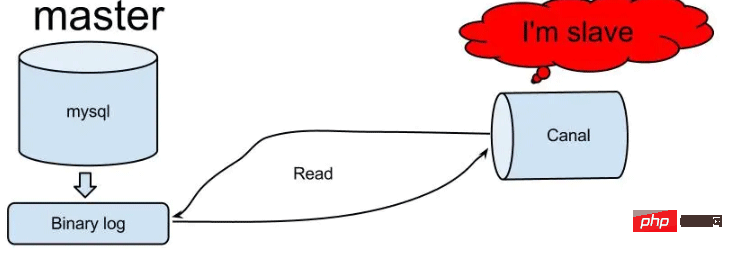 怎么使用SpringBoot+Canal实现数据库实时监控May 10, 2023 pm 06:25 PM
怎么使用SpringBoot+Canal实现数据库实时监控May 10, 2023 pm 06:25 PMCanal工作原理Canal模拟MySQLslave的交互协议,伪装自己为MySQLslave,向MySQLmaster发送dump协议MySQLmaster收到dump请求,开始推送binarylog给slave(也就是Canal)Canal解析binarylog对象(原始为byte流)MySQL打开binlog模式在MySQL配置文件my.cnf设置如下信息:[mysqld]#打开binloglog-bin=mysql-bin#选择ROW(行)模式binlog-format=ROW#配置My
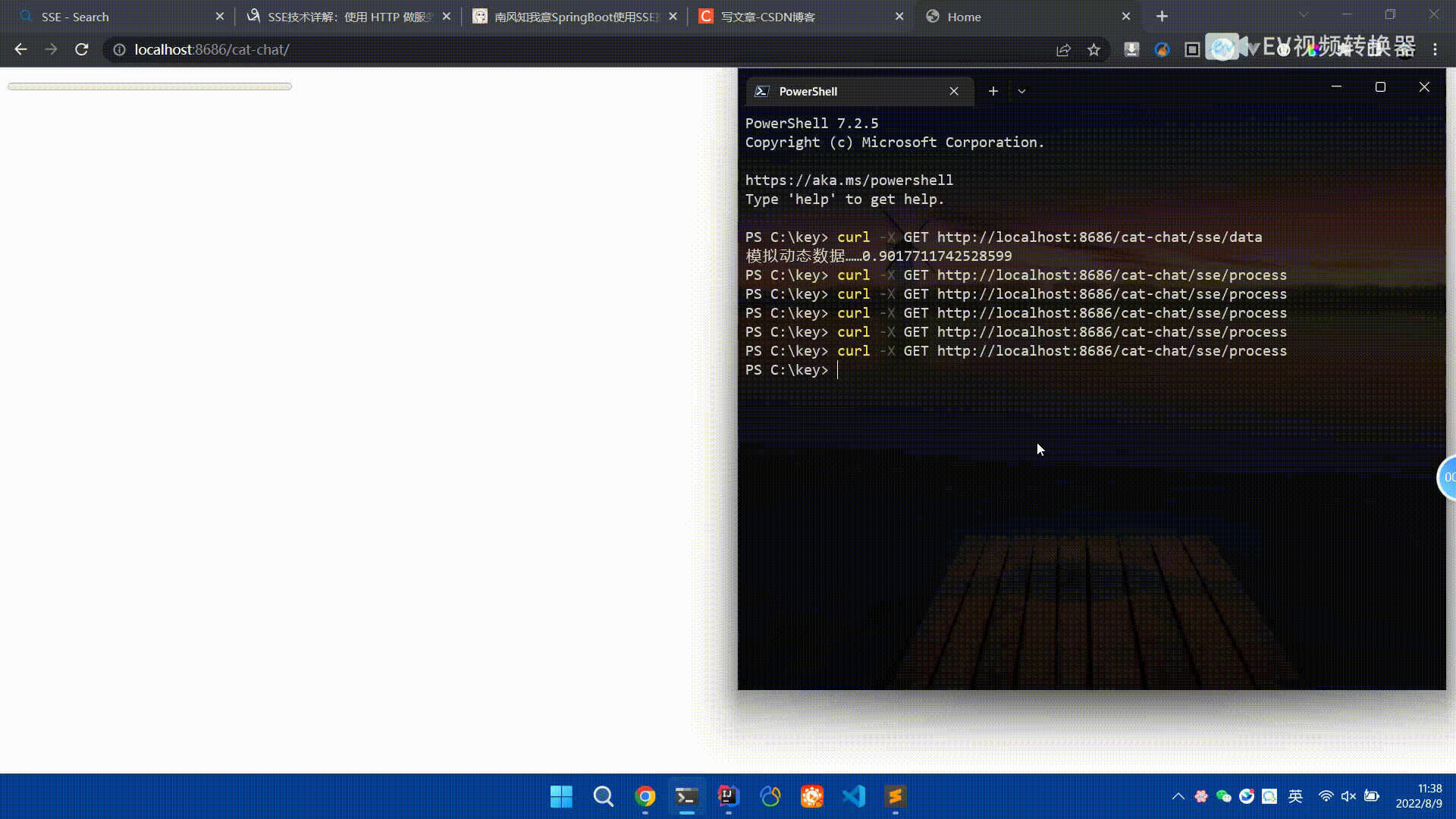 Spring Boot怎么使用SSE方式向前端推送数据May 10, 2023 pm 05:31 PM
Spring Boot怎么使用SSE方式向前端推送数据May 10, 2023 pm 05:31 PM前言SSE简单的来说就是服务器主动向前端推送数据的一种技术,它是单向的,也就是说前端是不能向服务器发送数据的。SSE适用于消息推送,监控等只需要服务器推送数据的场景中,下面是使用SpringBoot来实现一个简单的模拟向前端推动进度数据,前端页面接受后展示进度条。服务端在SpringBoot中使用时需要注意,最好使用SpringWeb提供的SseEmitter这个类来进行操作,我在刚开始时使用网上说的将Content-Type设置为text-stream这种方式发现每次前端每次都会重新创建接。最
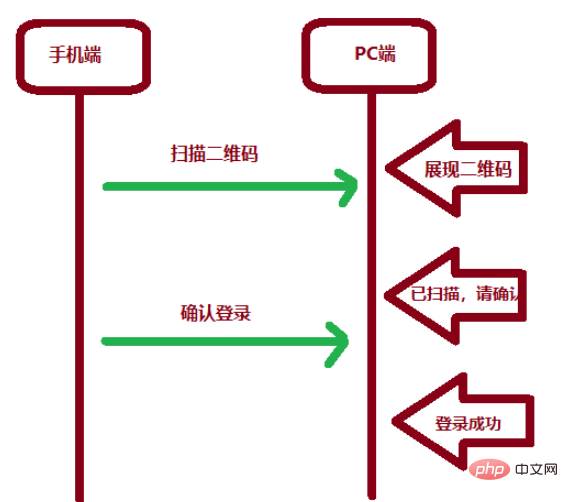 SpringBoot怎么实现二维码扫码登录May 10, 2023 pm 08:25 PM
SpringBoot怎么实现二维码扫码登录May 10, 2023 pm 08:25 PM一、手机扫二维码登录的原理二维码扫码登录是一种基于OAuth3.0协议的授权登录方式。在这种方式下,应用程序不需要获取用户的用户名和密码,只需要获取用户的授权即可。二维码扫码登录主要有以下几个步骤:应用程序生成一个二维码,并将该二维码展示给用户。用户使用扫码工具扫描该二维码,并在授权页面中授权。用户授权后,应用程序会获取一个授权码。应用程序使用该授权码向授权服务器请求访问令牌。授权服务器返回一个访问令牌给应用程序。应用程序使用该访问令牌访问资源服务器。通过以上步骤,二维码扫码登录可以实现用户的快
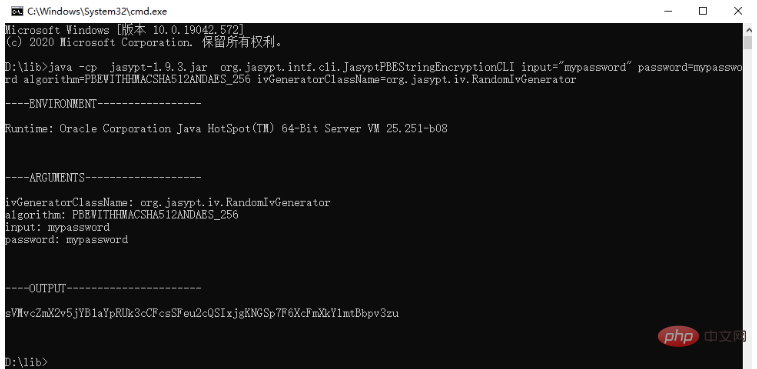 spring boot怎么对敏感信息进行加解密May 10, 2023 pm 02:46 PM
spring boot怎么对敏感信息进行加解密May 10, 2023 pm 02:46 PM我们使用jasypt最新版本对敏感信息进行加解密。1.在项目pom文件中加入如下依赖:com.github.ulisesbocchiojasypt-spring-boot-starter3.0.32.创建加解密公用类:packagecom.myproject.common.utils;importorg.jasypt.encryption.pbe.PooledPBEStringEncryptor;importorg.jasypt.encryption.pbe.config.SimpleStrin
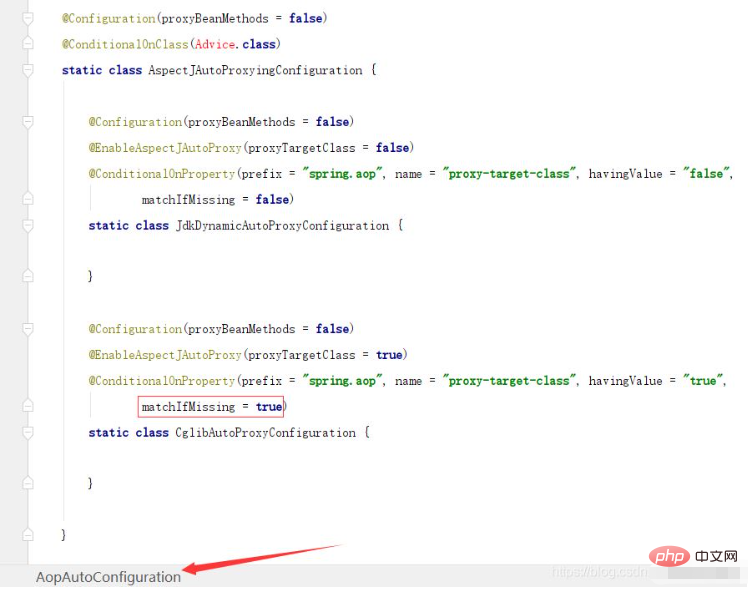 SpringBoot/Spring AOP默认动态代理方式是什么May 10, 2023 pm 03:52 PM
SpringBoot/Spring AOP默认动态代理方式是什么May 10, 2023 pm 03:52 PM1.springboot2.x及以上版本在SpringBoot2.xAOP中会默认使用Cglib来实现,但是Spring5中默认还是使用jdk动态代理。SpringAOP默认使用JDK动态代理,如果对象没有实现接口,则使用CGLIB代理。当然,也可以强制使用CGLIB代理。在SpringBoot中,通过AopAutoConfiguration来自动装配AOP.2.Springboot1.xSpringboot1.xAOP默认还是使用JDK动态代理的3.SpringBoot2.x为何默认使用Cgl
 使用Java SpringBoot集成POI实现Word文档导出Apr 21, 2023 pm 12:19 PM
使用Java SpringBoot集成POI实现Word文档导出Apr 21, 2023 pm 12:19 PM知识准备需要理解ApachePOI遵循的标准(OfficeOpenXML(OOXML)标准和微软的OLE2复合文档格式(OLE2)),这将对应着API的依赖包。什么是POIApachePOI是用Java编写的免费开源的跨平台的JavaAPI,ApachePOI提供API给Java程序对MicrosoftOffice格式档案读和写的功能。POI为“PoorObfuscationImplementation”的首字母缩写,意为“简洁版的模糊实现”。ApachePOI是创建和维护操作各种符合Offic
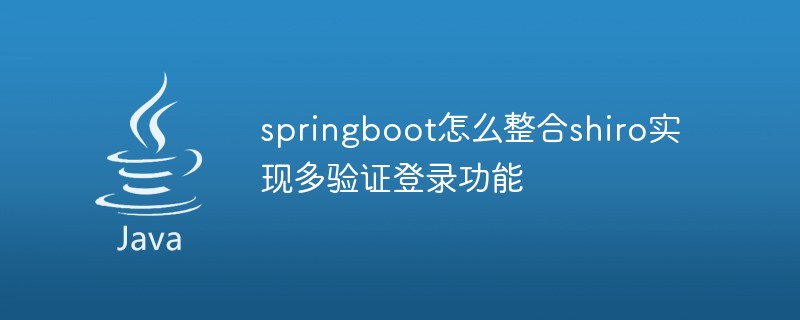 springboot怎么整合shiro实现多验证登录功能May 10, 2023 pm 04:19 PM
springboot怎么整合shiro实现多验证登录功能May 10, 2023 pm 04:19 PM1.首先新建一个shiroConfigshiro的配置类,代码如下:@ConfigurationpublicclassSpringShiroConfig{/***@paramrealms这儿使用接口集合是为了实现多验证登录时使用的*@return*/@BeanpublicSecurityManagersecurityManager(Collectionrealms){DefaultWebSecurityManagersManager=newDefaultWebSecurityManager();
 SpringBoot项目打包发布到外部tomcat遇到的问题怎么解决May 10, 2023 pm 05:49 PM
SpringBoot项目打包发布到外部tomcat遇到的问题怎么解决May 10, 2023 pm 05:49 PM先说遇到问题的情景:初次尝试使用springboot框架写了个小web项目,在IntellijIDEA中能正常启动运行。使用maven运行install,生成war包,发布到本机的tomcat下,出现异常,主要的异常信息是.......LifeCycleException。经各种搜索,找到答案。springboot因为内嵌tomcat容器,所以可以通过打包为jar包的方法将项目发布,但是如何将springboot项目打包成可发布到tomcat中的war包项目呢?1.既然需要打包成war包项目,首


Hot AI Tools

Undresser.AI Undress
AI-powered app for creating realistic nude photos

AI Clothes Remover
Online AI tool for removing clothes from photos.

Undress AI Tool
Undress images for free

Clothoff.io
AI clothes remover

AI Hentai Generator
Generate AI Hentai for free.

Hot Article

Hot Tools

SublimeText3 English version
Recommended: Win version, supports code prompts!

Safe Exam Browser
Safe Exam Browser is a secure browser environment for taking online exams securely. This software turns any computer into a secure workstation. It controls access to any utility and prevents students from using unauthorized resources.

Zend Studio 13.0.1
Powerful PHP integrated development environment

DVWA
Damn Vulnerable Web App (DVWA) is a PHP/MySQL web application that is very vulnerable. Its main goals are to be an aid for security professionals to test their skills and tools in a legal environment, to help web developers better understand the process of securing web applications, and to help teachers/students teach/learn in a classroom environment Web application security. The goal of DVWA is to practice some of the most common web vulnerabilities through a simple and straightforward interface, with varying degrees of difficulty. Please note that this software

mPDF
mPDF is a PHP library that can generate PDF files from UTF-8 encoded HTML. The original author, Ian Back, wrote mPDF to output PDF files "on the fly" from his website and handle different languages. It is slower than original scripts like HTML2FPDF and produces larger files when using Unicode fonts, but supports CSS styles etc. and has a lot of enhancements. Supports almost all languages, including RTL (Arabic and Hebrew) and CJK (Chinese, Japanese and Korean). Supports nested block-level elements (such as P, DIV),







